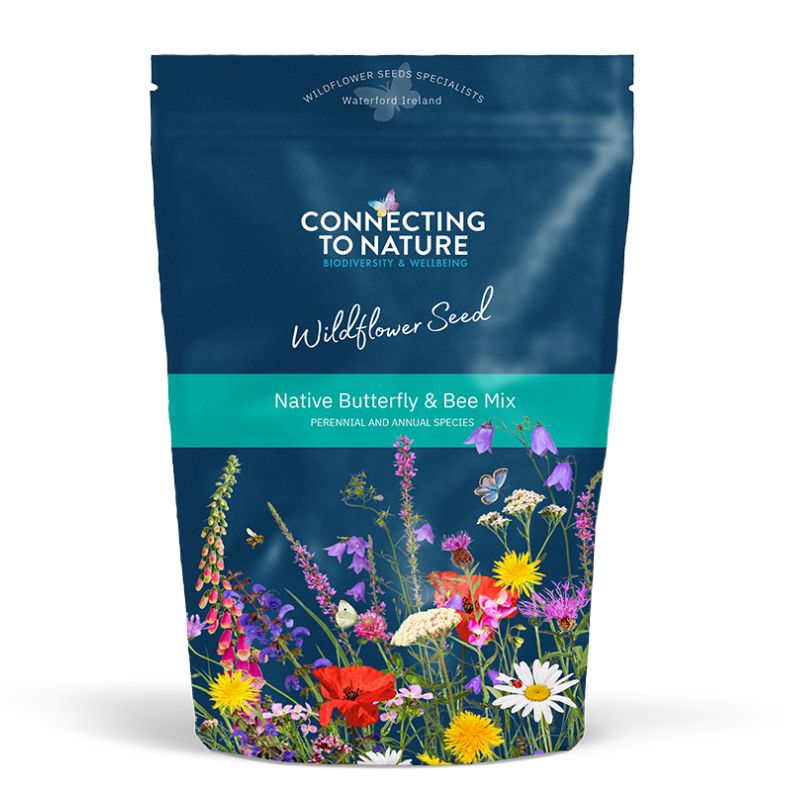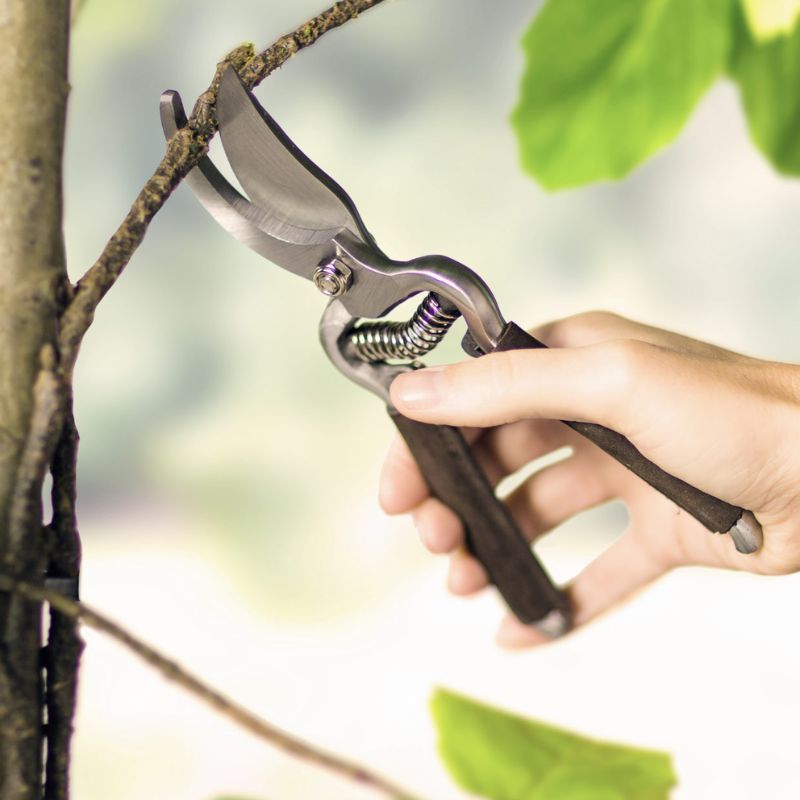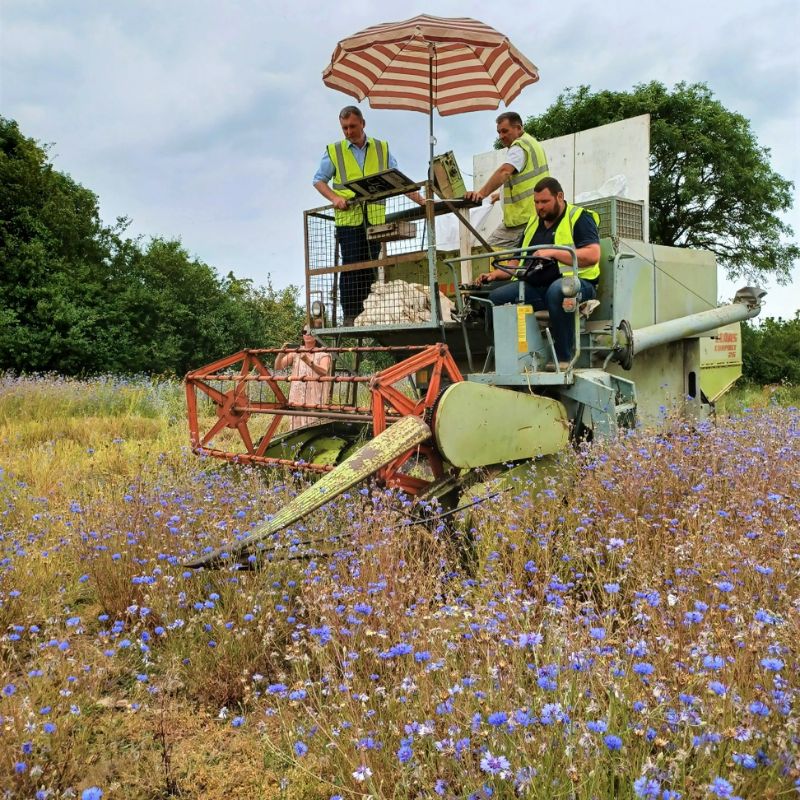Giving Nature a Helping Hand by writer Zoë Devlin
For me, one of the best sounds of summer is that of bumblebees, buzzing and rattling their way, up and down the purple fingers on spikes of foxgloves.
It's not just the romantic in me that appreciates nature's music but the practical. Since I realised, some years ago, that our pollinators were in decline, I have been learning how to protect them to try to stem what could be a catastrophic loss, not only to our natural environment but to the Irish economy. At present, they contribute over €50 million, each year, by pollinating our vegetable and fruit crops. *
With one-third of Irish bee species threatened with extinction, the All-Ireland Pollinator Plan was launched in 2015, and its remit has been to raise awareness of the need to act to prevent their further decline. One of its main aims was to encourage the growth of wildflowers wherever possible.
From a pollinator's viewpoint, wildflowers have a distinct advantage over cultivated garden plants – they are easier to feed on. Access to nectar is far more direct in a wildflower as many cultivated plants have multiple petals that inhibit an insect's entry. They can also be low in pollen and nectar. If you look at the simple form of a Dog-rose compared with a more complex, multi-petalled garden variety, you can see what I mean.
Bees carry out most pollination as they feed their young on pollen alone but other insects, such as hoverflies, moths and butterflies, also play their part in providing this service. To survive, pollinators need both pollen and nectar and many of our native wildflowers have these in abundance.
Members of the pea flower family are high on the list of food suppliers to both humans and pollinators. One of the best-known supporters of insects is Gorse, that prickly native species that grow in profusion and seems to be in flower almost all year round. To watch honeybees working their way along each flower is fascinating. Because the plants have such an extended flowering time, their pollen is on tap early in the year and after other sources have died.
Close cousins of Gorse are Clovers and Vetches, most of which bloom in summer and through to the end of autumn. If you closely examine the flowerhead of a White or Red Clover, you can see it is made up of many little pea flowers, each providing sustenance for hungry bees. Another most useful member of this family is Common Bird's-foot-trefoil, often referred to as Eggs-and-Bacon. This is a pretty yellow-flowered perennial with seedpods closely resembling a bird's foot, hence its common name. It forms clusters and can be used as an attractive border plant, flowering from May to September, when it is continuously visited by pollen and nectar-seeking insects.
Mention of this pretty trefoil reminds me that this plant species serves another most useful purpose in a superb example of symbiosis. That is in its support of some of our smaller butterflies' most eye-catching, among them the Common Blue. This little insect needs the trefoil as a larval food plant for its young. When they emerge, it is the nutrition in the leaves that will help them to survive.
Probably not the most eye-catching species but a high provider of both nectar and pollen is Common Knapweed. Beetles and flies join the ranks of pollinators that flock to its purple/mauve flowerheads. Resembling thistles, Knapweed doesn't bear the prickly spines of those wildflowers. Wherever it grows, be it in meadows or hedgerows, it contributes to another natural world element. After it has finished flowering – usually in October – the seeds of this perennial species are also beneficial to birds such as goldfinches.
A walk or cycle along country roads and lanes between May and September is often enhanced by the sight of wide clumps of large daisies, wafting in the summer breeze. Oxeye Daisies are known to many as Dog Daisies – and once their seeds germinate, they establish themselves in the soil, developing a creeping rootstock. Year after year, they keep reappearing, offering sustenance to a wide variety of pollinating insects such as ants, beetles and moths.
As its name suggests, Selfheal was once used in folk medicine as a herbal remedy for many ailments. It is a low-growing perennial plant, bearing short columns of purple – sometimes white – flowers and is often found in lawns. If left to its own devices, it will feed bees and wasps from June to October.
Mother Nature has quite a few tricks up her sleeves.
One that I find intriguing is the relationship between the Cuckooflower and the Orange-tip butterfly. In early April, the pink or white, four-petalled flowers of the Cuckooflower begin to show their faces. This coincides with the emerging of the overwintering butterflies. The female – she's the one without the orange tips to her wings, that's the male's attire – then lays her eggs beneath the flowers. When the eggs hatch, they feast on the seed pods of this plant.
Support for our pollinators comes in all shapes and sizes and not always from the most handsome of our wildflowers, the Common Nettle, being one of the best examples. Butterflies, such as the Small Tortoiseshell and Red Admiral, lay their eggs under this plant's leaves. The Nettle's stinging hairs deter predators from disturbing the eggs, and when the grubs emerge from this nursery, the leaves are what they feed on to thrive and become the next generation.
Many gardeners might throw their hands up in horror at the thought of Dandelions in the garden, but pollinators do not share that sentiment. When you look closely at the flowerhead of this species, what you are seeing is up to one hundred florets, each ready to provide a meal of nectar and pollen to whoever comes in search of it. Its early flowering time can be the difference between life and death to some emerging, hungry creatures.
Allowing Dandelions to bloom is one of the many simple actions that are suggested in the Pollinator Plan. Sowing native wildflowers is another that will reap benefits for the environment.
Over a number of years, parts of your garden can become such useful places for pollinators to dine in that you can leave them to continue on their own, doing what natures does best, just getting on with it. You will have played your part.
Zoë Devlin. 2021
*All-Ireland Pollinator Plan 2015-2020













